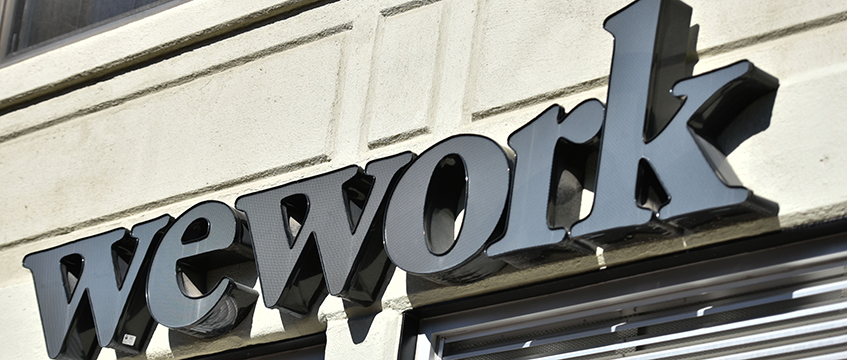WeWork’s dire losses have put flex leasing models and the longevity of non-serviced offices in the spotlight, as the company raises “substantial doubt” that it would be able to continue operating.
The flex office heavy-hitter has said its survival will depend on its ability to boost liquidity and profit over the next year, prompting questions about the future of the flex industry. Once privately valued at $47bn (£37bn at today’s exchange rate), it has become a penny stock with shares trading at around 20 cents.
However, industry players believe its woes are unique to its model and sprawling real estate footprint.
Jane Sartin, executive director of the Flexible Space Association, noted that as a self-described “tech company”, WeWork identifies differently from other operators in the space that “would see themselves more as providers in the service industry”.
“They do their own thing their own way, and it’s not how most flexible workspace operators run things,” Sartin said.
Sartin said new operators have been capitalising on changing customer needs by concentrating on wellness and design-focused spaces, and using data to inform those decisions. New entrants such as Clockwise, Huckletree and x+why were cited as the “modern faces of flexible workspace”, being “design-focused in providing somewhere that people want to go and work in”.
Lessons from an “outdated model”
Jonny Rosenblatt, co-founder of Spacemade, said while WeWork has “done a lot of great things for the flex industry”, it is an “outlier”.
“There’s a slight misconception that WeWork’s demise equates to the demise of the flex industry. It’s quite the opposite,” said Rosenblatt. “They’ve just got a very outdated model that does not work anymore.
“They expanded at a rate of knots a few years ago, and to the detriment of things like profit and trying to make a sustainable business.”
Part of WeWork’s recovery plan involves cutting rent and tenancy costs over the next 12 months, limiting spending and searching for additional capital. Its portfolio comprises 57 UK locations and an 18m sq ft international estate, containing more than $13bn of lease liabilities.
For Rosenblatt, the solution is in operating under management agreements only. He said that has “definitely been the shift in direction across the market post-Covid”, as more occupiers are seeking offerings that are “much more akin to a hotel”. Such models also enable greater agility in pricing.
“In a difficult office market, landlords are reliant on operators to deliver an experience that attracts tenants, and it’s very hard to do that under a traditional model,” he said.
A clear proposition
Cal Lee, co-head of Savills Flex, observed that more resilient operators have made a point of understanding their market and what product works for their offer, rather than trying to be “all things to all parties”. One example is IWG, which last week posted record first-half revenue of £1.5bn, up by 14% from H1 2022.
IWG, which operates a franchising model, claims to have converted around 50 former WeWork properties for its own portfolio, which includes offices and business centres.
“Where we have seen challenges is where operators often deviated from [their] business model and offer to create growth, and the reality [is that it] then takes them slightly off-track,” said Lee.
“If you look at IWG, it has a very clear proposition about the market it is after, the price point, the locations, and it made some strategic decisions about where it was to exit to make sure that its business [aligned] with that. Like the hotel sector, you have two, three, four, five-star projects and you have an audience for each.”
While Lee is “sure” that landlords and investors will be unnerved by WeWork’s precarious position, he is upbeat that there is enough demand in the sector to offset any dent in confidence that its struggles might cause.
“At the other end of the spectrum, you have a lot of investors that are investing heavily in [the market] because they recognise fundamentally that, at the end of the day, there is demand for it. They either want to be in it or they want it in their buildings as an option should they need it in the future,” said Lee.
“The key lesson to take from all of this is to make sure that it is a deal structure that can generate success so that these parties can reap the rewards.”
To send feedback, e-mail chante.bohitige@eg.co.uk or tweet @bohitige or @EGPropertyNews











